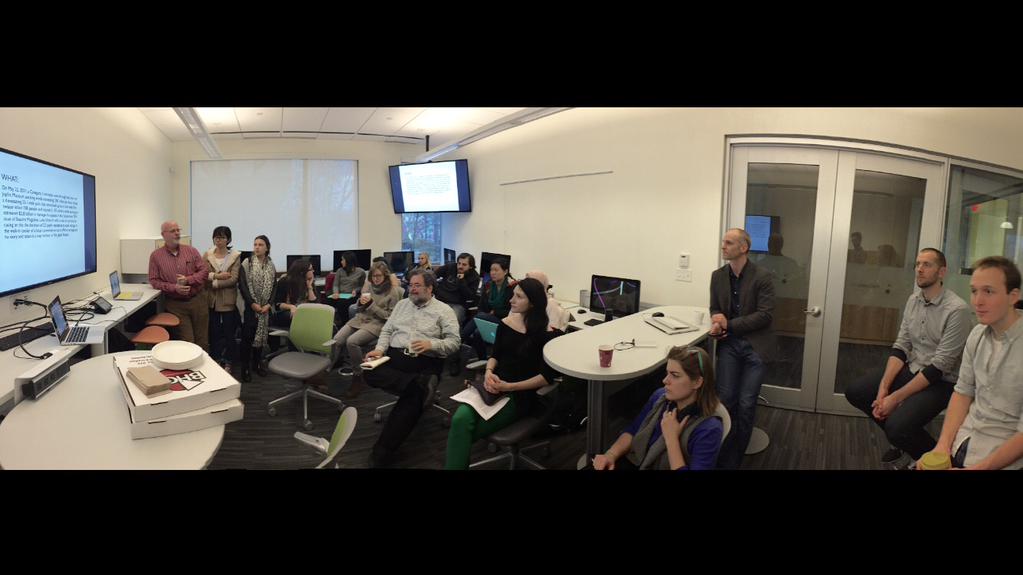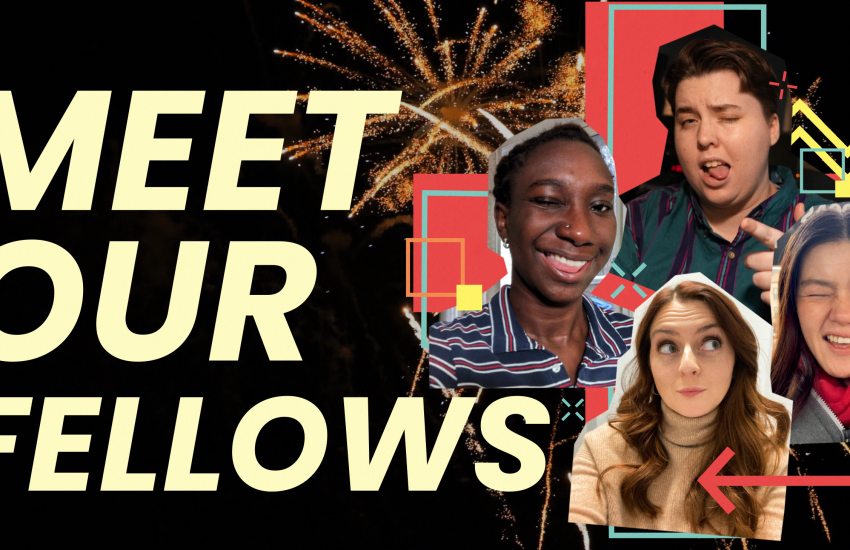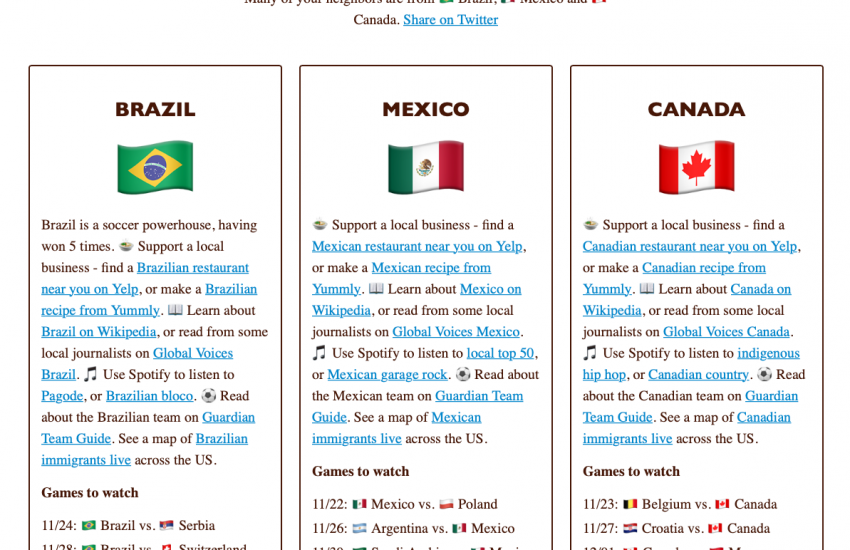How Northeastern University designed a course to reinvent magazine journalism for the digital age
Imagine a teaching hospital where students in design, journalism and computer science work with magazine editors to reimagine what a feature story looks, feels, and sounds like in the digital age.
An experimental course that promised and delivered just that has just wrapped up at Northeastern University. StoryLab, as we called it, brought together graduate and undergraduate students with varied backgrounds to work on semester-long digital storytelling projects that dissected and digitally remastered feature stories from Esquire magazine. Read about how we beta tested it here. Scroll down for the syllabus or find it here.
How the course unfolded
We, David Tames and Aleszu Bajak, dedicated the first few weeks to establishing context and sowing the seeds of inspiration. Students explored the latest in virtual reality, interactive documentary, game design, and data visualization. We invited in a series of guest speakers and even threw a micro-conference, a mini TED-like gathering, to explore some of the disciplines that are feeding into digital storytelling. We then placed the students into small groups. Together, they pitched and voted on which Esquire stories they wanted to tackle for the final project.
After weeks of research and endless rounds of iterative design (and lots of pizza, chips and hummus), the teams presented their prototypes to a panel of guest critics pulled from various disciplines: graphic design, journalism, civic media, entrepreneurship, web development and user experience design. In order to steer the projects, this panel critique was scheduled midway through the semester as well as at the end of the course. Below you will see what emerged: the final projects.
The final projects
Refuge in a cooler
Story: Joplin by Luke Dittrich.
Theme: An online narrative experience based on a National Magazine Award-winning article about two dozen strangers who sought refuge from the 2011 tornado in Joplin, Missouri in the same walk-in beer cooler at a local gas station.
Team: Steve Daly, Alexandra Diaz-Duran Townson, and Jin Wang
The Joplin team chose to build an interactive online experience where users can explore Dittrich’s story by following one of several narrative paths. Photographer Matt Eich‘s compelling images are included, visible either fullscreen or in galleries. Most narrative paths follow individual characters and their experience as chronicled by Dittrich. Another path fast-forwards the reader to “The Chaos,” the moment when the tornado hits. As a final element the group designed a “Were you there?” section for other tornado survivors to share their stories.
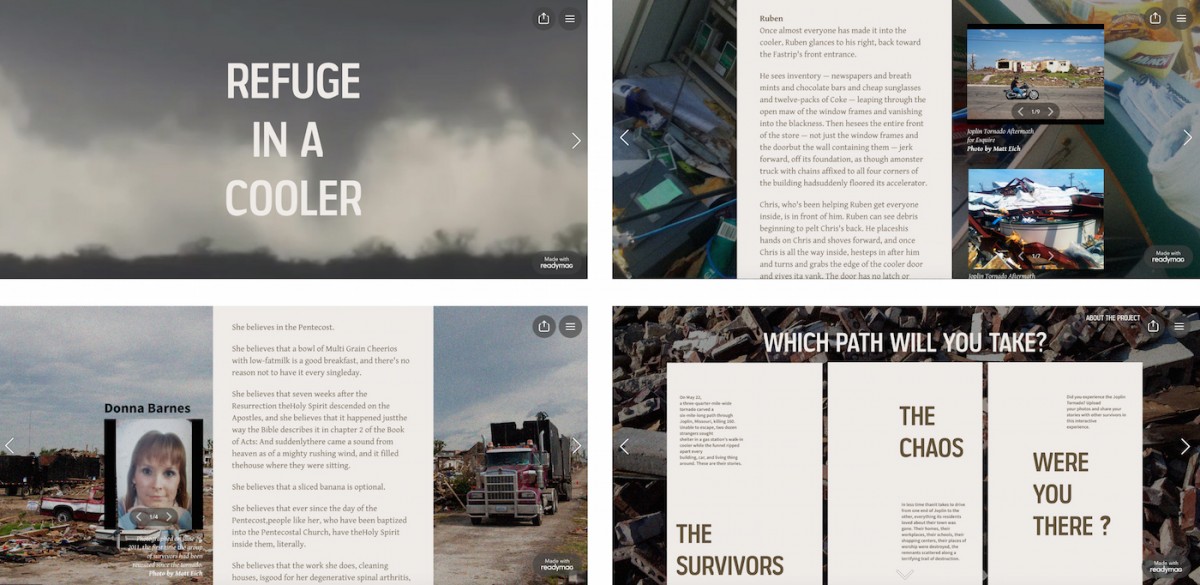
Do we really want to live without the post office?
Story: “Do we really want to live without the post office?” by Jesse Lichtenstein.
Theme: The United States Postal Service binds us together as a country. It’s also hemorrhaging cash. Is it worth saving?
Team: Maria Amasanti, Natasha Boos, Ashley Treni, Monica Vallejo.
The post office team, honing in on the human element of Lichtenstein’s story, decided to interview and follow a local mail carrier with a camera. He even let the team attach a GoPro to his mail cart as it bounced down the streets of South Boston. They edited the footage into a short interactive documentary (which they prototyped in Keynote) that elegantly brought in pieces of Lichtenstein’s Esquire story as well as economic and historical data on the postal service using animated notification and drop-down effects.
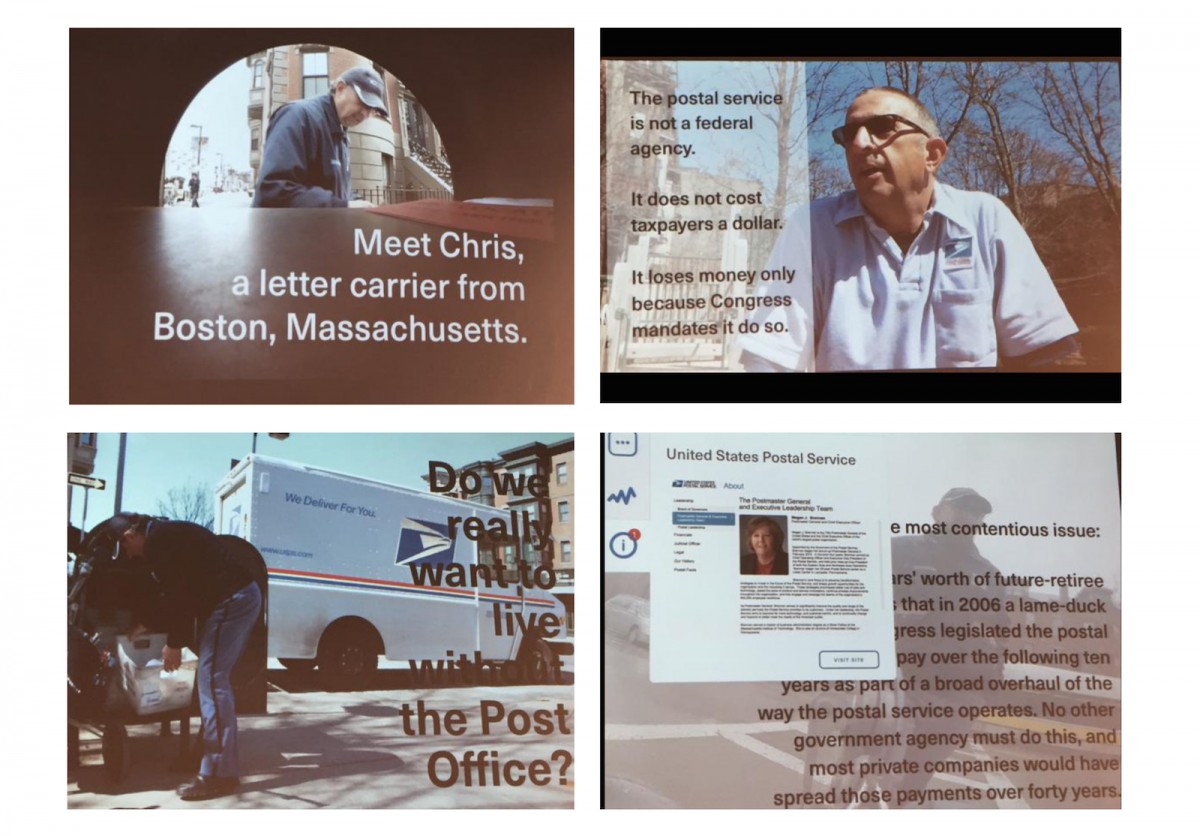
Rethinking a missing persons database
Story: Forthcoming article by Tom Junod.
Theme: Missing women in the United States.
Team: Esat Karaman, Mimi Lin, Rania Masri, Libby Leyden-Sussler.
The team chose to work on a story that was still in the process of being written. Without finished copy to work with, the team designed a platform for readers of the forthcoming story that would foster a sense of online community and a common goal: finding missing persons. Their project sought to blend a missing persons database with a social network seen in sites like Airbnb. To get the word out and entice readers to sign up, the team specially designed coffee cup sleeves for distribution at local cafes with missing persons information and links to the website. The use of information on coffee cup sleeves is an interesting rethinking of past campaigns featuring the faces of missing children and their information on milk cartons.
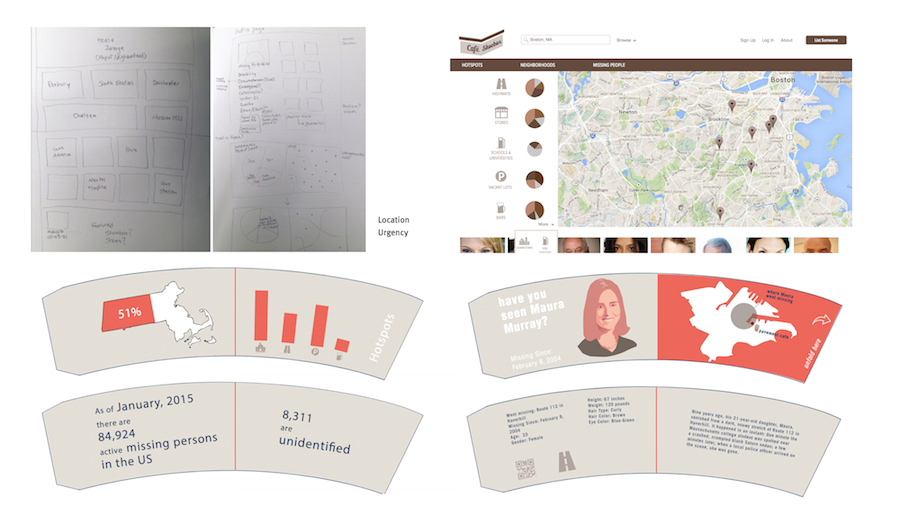
And here’s a look at the class syllabus:
StoryLab Syllabus
Description
Students will team up with the writers, editors, and designers at Esquire magazine to reinvent what storytelling looks like, sounds like, and reads like in the digital age. The media industry is changing very quickly, and our goal is to create a course that reflects this reality. For StoryLab, we plan to assemble a team of undergraduate and graduate developers, designers, media makers, and journalists. The curriculum will be organized around existing Esquire features, with an emphasis on creativity and experimentation in the use of interactive media, data visualization, and new forms of narrative presentation. Esquire staffers will be present as well as frequent guest lecturers and active collaborators.
Learning Outcomes
- Ability to analyze, deconstruct and appraise representative works of interactive journalism and documentary as demonstrated through written reviews, analysis, and presentations;
- Describe key trends in interactive journalism and documentary practice and methods of collaborative production as demonstrated by active engagement in reading assignments, written reviews and analysis, and classroom discussion;
- Explain the intrinsic and technical qualities of interactive journalism and documentary in comparison to linear documentary, traditional journalism, photojournalism, news websites, etc., as demonstrated by active engagement in reading assignments and contribution to classroom discussion;
- Participate in the research, design, and implementation of an interactive magazine feature story as demonstrated by participation in production activities working in an interactive documentary production team that successfully completes an web or tablet based interactive prototype;
About this course (a manifesto of sorts)
Storytelling is undergoing a profound reinvention with the advent of the Internet. Seemingly overnight, everyone with a computer–or smartphone–became a self-publisher of prose and poetry, photo and video, tweets and rants. The old guard of media publishing was caught off guard and is still struggling to keep pace and remain profitable in an age of free content. Access to information, distribution channels, and design have been democratized in a way that making content is as easy as hitting Publish. Wading into this fray, how do we reimagine what a well-reported, deeply-researched and finely-edited piece of journalism looks like, sounds like and reads like in the digital age? Does it connect with the reader on a deep level? How do we measure engagement? Does it have to look like what a story used to look like? Together with writers from Esquire magazine and leading innovators in interactive media, documentary, and design, we will try to answer these questions.
Assigned readings
Each week, assigned readings will be listed in the syllabus each week and should be completed before the next class meeting. This section may be merged back into the bibliography where you’ll find detailed citations and links to online documents. Documents not available on the public web will be made available in the course DropBox folder, the link to which was sent to each student via email.
- “Moments of Innovation” by William Uricchio
- “Modes of interactivity: analyzing the webdoc” by Kate Nash
- “A New Story: Purposeful Storytelling and Designing with Data,” Harmony Institute
- “Interactive Documentary Manifesto” by Andre Almeida and Heitor Alvelos
- “Interactive documentary and the future of journalism” by Jess Linington
- “Reinventing comics” by Scott McCloud (USC talk about comics as a medium)
- “A Creator’s Guide to Transmedia Storytelling: How to Captivate and Engage Audiences Across Multiple Platforms” by Andrea Phillips
- “Database as a Symbolic Form” by Lev Manovich, Millennium Film Journal No. 34,
Additional readings
Pick at least two additional readings from the following list depending on your area of interest. Detailed citations and links to online documents may be found in the bibliography.
Media history
- “The medium is the message at 50,” WNYC’s On the Media on Marshall McLuhan
- “Explorations in communication,” Edmund Carpenter and Marshall McLuhan
Documentary
- “What a Documentary Is, After All” by Carl Plantinga
Design and data visualization
- “Design for information” by Isabel Meirelles
- “The Functional Art” by Alberto Cairo
- “Graphic design: the new basics” from Ellen Lupton
- “Storytelling with Data” presentation on design process by Jonathan Corum, science graphics editor at The New York Times
Building transmedia storyworlds
- “Transmedia Marketing: From Film and TV to Games and Digital Media” by Anne Zeiser
- “Building Storyworlds: the art, craft and business of storytelling in the 21st century ” by Lance Weiler
- “The Art of Immersion: How the Digital Generation is Remaking Hollywood, Madison Avenue, and How We Tell Stories,” Frank Rose
- “Interaction Design: Beyond Human — Computer Interaction ” by Yvonne Rogers, Helen Sharp & Jenny Preece
Game design
- “Casual Game Design: Designing Play for the Gamer in ALL of Us” by Gregory Trefry
- “Rules of Play: Game Design Fundamentals ” by Katie Salen Tekinbas & Eric Zimmerman
The innovation process
- “The Ten Faces of Innovation: IDEO’s Strategies for Defeating the Devil’s Advocate and Driving Creativity Throughout Your Organization ” by Tom Kelly
- “A Taxonomy of Innovation” by LUMA Institute in the Harvard Business Review
The future of journalism
- “Content is king but distribution is queen” presentation by Buzzfeed’s Jonathan Perlman
- “Journalism in the age of data” from Stanford University.
Inspiration
Early experimental works
- Aspen MovieMap, MIT Media Lab, Michael Naimark et al., 1978
- Elastic Charles: A Hypermedia Journal, MIT Media Lab, 1989, see Brondmo, 1989
- ConText: An Evolving Documentary, Mike Murtaugh, 1995, See Davenport, 1995
- CyberBELT: A Multi-threaded Documentary, MIT Media Lab, 1994, Josh Bers, et al., see: Bers, et al., 1994
- Jerome B. Wiesner, 1915-1994: A Random Walk through the 20th Century, MIT Media Lab, Glorianna Davenport, Michael Murtaugh, 1996
- Swimming to Cambodia, Spaulding Grey, 1987
Contemporary examples
- Snow Fall, New York Times, 2012, http://www.nytimes.com/projects/2012/snow-fall
- Riding the New Silk Road, The New York Times, 2013,http://www.nytimes.com/newsgraphics/2013/07/21/silk-road/
- Out of sight, out of mind, drone strikes in Pakistan, Pitch Interactive, http://drones.pitchinteractive.com/
- Losing Ground, Louisiana’s disappearing coasts, 2014, ProPublica, https://projects.propublica.org/louisiana/
- Hollow, Elaine McMillion Sheldon, 2013, http://hollowdocumentary.com
- Bear 71, NFB, 2012, http://bear71.nfb.ca/#/bear71
- Welcome to Pine Point (NFB/CA), http://pinepoint.nfb.ca/#/
- A Journal of Insomnia, NFB, http://insomnia.nfb.ca/#/insomnia
- Prison Valley (David Dufresne & Phillipe Brault, Arte, 2010), game, exploration elements integrated with a linear video and ability for audience to communicate with subjects of the documentary,http://prisonvalley.arte.tv/?lang=en
- Highrise: Out My Window (NFB, Katerina Cizek), http://interactive.nfb.ca/#/outmywindow/
- Highrise: One Millionth Tower (NFB, Katerina Cizek), walks a tightrope between two modalities: the cinematic and the interactive, http://highrise.nfb.ca/onemillionthtower/
- The Wilderness Downtown, Arcade Fire interactive music video, http://vimeo.com/18750665
- Heroin in New England, More Abundant and Deadly, NYTimes article and Op-doc,http://www.nytimes.com/2013/07/19/us/heroin-in-new-england-more-abundant-and-deadly.html?pagewanted=all
Additional examples
- Journey to the End of Coal (Samuel Bollendorff & Abel Ségrétin, Honkeytonk, 2008),http://www.honkytonk.fr/index.php/webdoc/
- Brèves de Trottoir (Olivier Lambert and Thomas Salva, 2010)
- Main Street, NFB, http://mainstreet.nfb.ca/#/mainstreet/
- A Short History of the Highrise, a four-part interactive New York Times “Op-Doc” reminiscent of a pop-up book
- Shout Art Loud
- Night Walk in Marseilles, Google, http://nightwalk.withgoogle.com/en/panorama
- 40 Portraits in 40 years, Nicholas Nixon, http://www.nytimes.com/interactive/2014/10/03/magazine/01-brown-sisters-forty-years.html
- Water’s Edge: The Crisis of Rising Sea Levels, Reuters, http://www.reuters.com/investigates/special-report/waters-edge-the-crisis-of-rising-sea-levels/
- Norway the slow way, Reif Larson, The New York Times Travel,http://www.nytimes.com/interactive/2014/09/19/travel/reif-larsen-norway.html?ref=travel&_r=0
- The Audi Heist, transmedia advertisement http://www.youtube.com/watch?v=z5w2CNB9clw
- How I learned to start a pandemic, Lance Weiler http://vimeo.com/19167285
- UnknownSpring, Jake Price, http://unknownspring.com
- Barcode, NFB/ARTE, http://codebarre.tv/en/#/en/
- The Devil’s Toy Redux, NFB/ARTE, http://thedevilstoy.com/en/
- Las Voces de la Memoria, Barret Films/RTVE, http://vocesdelamemoria.rtve.es
- Love Radio, Anoek Steketee & Eefje Blankevoort, http://www.loveradio-rwanda.org/episode/1/onair/intro
- Gaza/Serdot: life in spite of everything, ARTE, http://gaza-sderot.arte.tv
- Animated Life: Seeing the Invisible, New York Times Op-Doc,http://www.nytimes.com/2014/09/16/opinion/animated-life-seeing-the-invisible.html
- Visualization of Narrative Structure: The Hobbit, The Glass Menagerie, and Kafka on the Shore, http://nbilenko.com/projects/narrative.html
